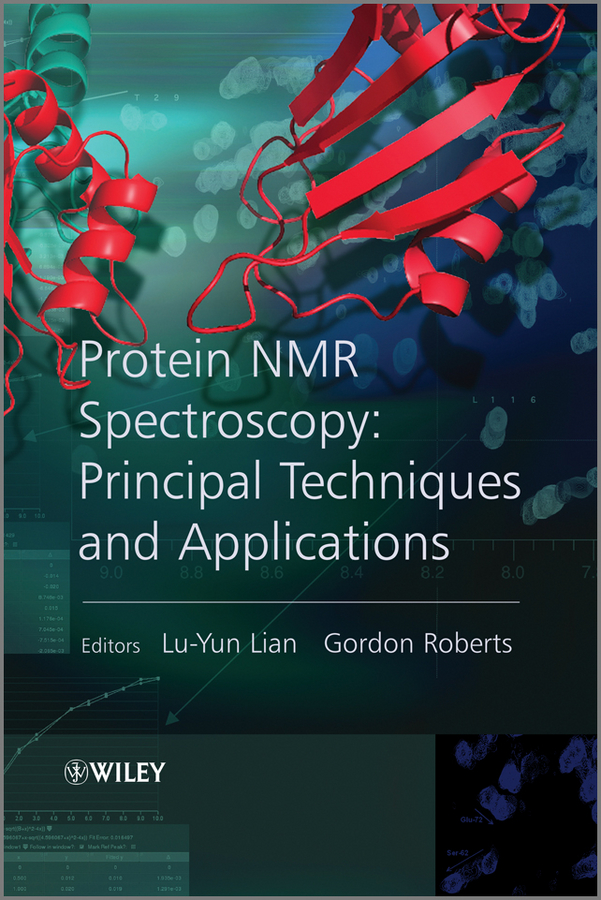Электронная книга: Lian Lu-Yun «Protein NMR Spectroscopy. Practical Techniques and Applications»

|
Nuclear Magnetic Resonance (NMR) spectroscopy, a physical phenomenon based upon the magnetic properties of certain atomic nuclei, has found a wide range of applications in life sciences over recent decades. The dramatic advances in NMR techniques have led to corresponding advances in the ability of NMR to study structure, dynamics and interactions of biological macromolecules in solution under close to physiological conditions. This volume focuses on the use of NMR to study proteins. NMR can be used to determine detailed three-dimensional structures of proteins in solution. Furthermore, it provides information about conformational or chemical exchange, internal mobility and dynamics at timescales varying from pcoseconds to seconds. It is the primary technique used to obtain information on intrinsically disordered (unfolded) proteins, since these proteins will not crystallize easily. NMR is also a very powerful method for the study of interactions of protein with other molecules, whether small molecules (including drugs), nuclear acids or other proteins. This up-to-date volume covers NMR techiniques and their application to proteins, with a focus on practical details. This book will provide a newcomer to NMR with the practical guidance in order to carry out successful experiments with proteins and to analyze the resulting spectra. Those who are familiar with the chemical applications of NMR will also find is useful in understanding the special requirements of protien NMR. Издательство: "John Wiley&Sons Limited"
ISBN: 9781119972013 электронная книга Купить за 9990.07 руб и скачать на Litres |
Другие книги схожей тематики:
| Автор | Книга | Описание | Год | Цена | Тип книги |
|---|
См. также в других словарях:
Protein nuclear magnetic resonance spectroscopy — (usually abbreviated protein NMR) is a field of structural biology in which NMR spectroscopy is used to obtain information about the structure and dynamics of proteins. The field was pioneered by, among others, Kurt Wüthrich, who shared the Nobel … Wikipedia
Nuclear magnetic resonance spectroscopy of proteins — (usually abbreviated protein NMR) is a field of structural biology in which NMR spectroscopy is used to obtain information about the structure and dynamics of proteins. The field was pioneered by Richard R. Ernst and Kurt Wüthrich[1], among… … Wikipedia
Mathematics and Physical Sciences — ▪ 2003 Introduction Mathematics Mathematics in 2002 was marked by two discoveries in number theory. The first may have practical implications; the second satisfied a 150 year old curiosity. Computer scientist Manindra Agrawal of the… … Universalium
mass spectrometry — or mass spectroscopy Analytic technique by which chemical substances are identified by sorting gaseous ions by mass using electric and magnetic fields. A mass spectrometer uses electrical means to detect the sorted ions, while a mass spectrograph … Universalium
Max Planck Institute for Biophysical Chemistry — The Max Planck Institute for Biophysical Chemistry (Karl Friedrich Bonhoeffer Institute) in Göttingen is a research institute of the Max Planck Society. Currently, 812 people work at the Institute, 353 of them are scientists. As one of the… … Wikipedia
DNA nanotechnology — seeks to make artificial, designed nanostructures out of nucleic acids, such as this DNA tetrahedron.[1] Each edge of the tetrahedron is a 20 base pair DNA double helix, and each vertex is a three arm junction. DNA n … Wikipedia
